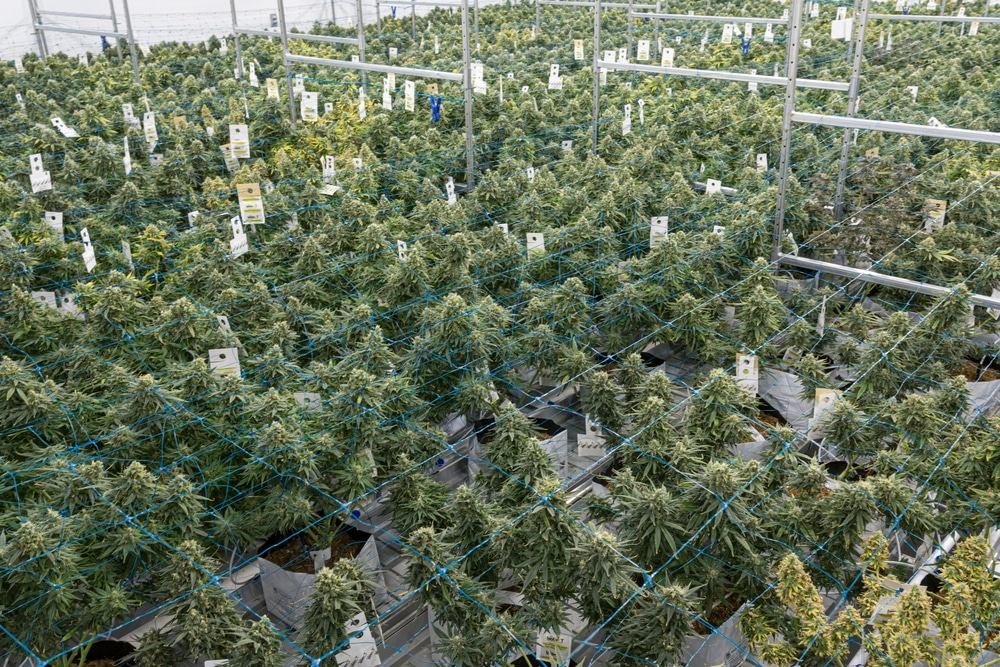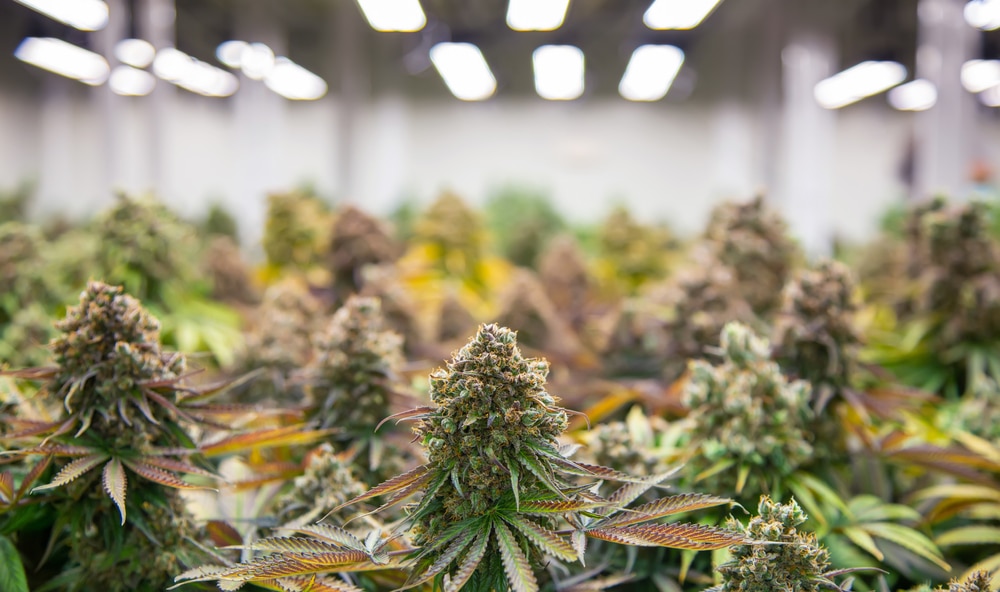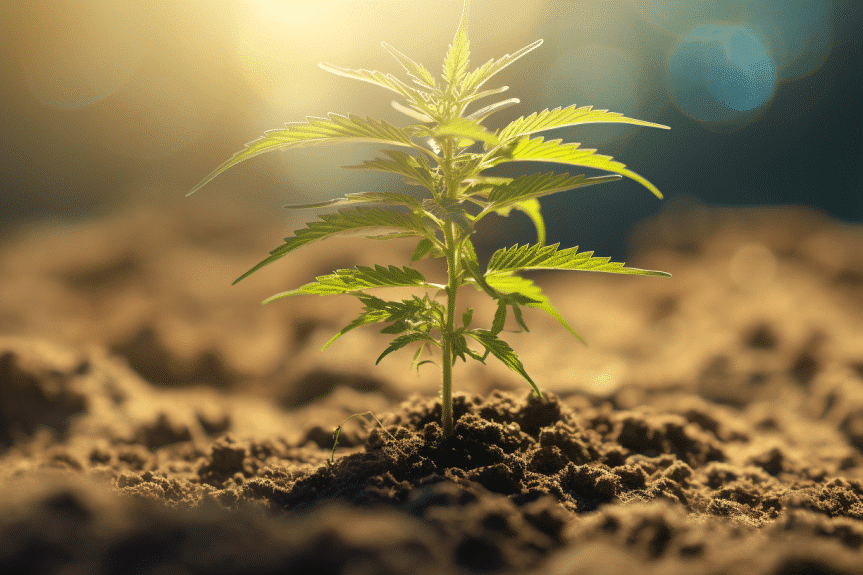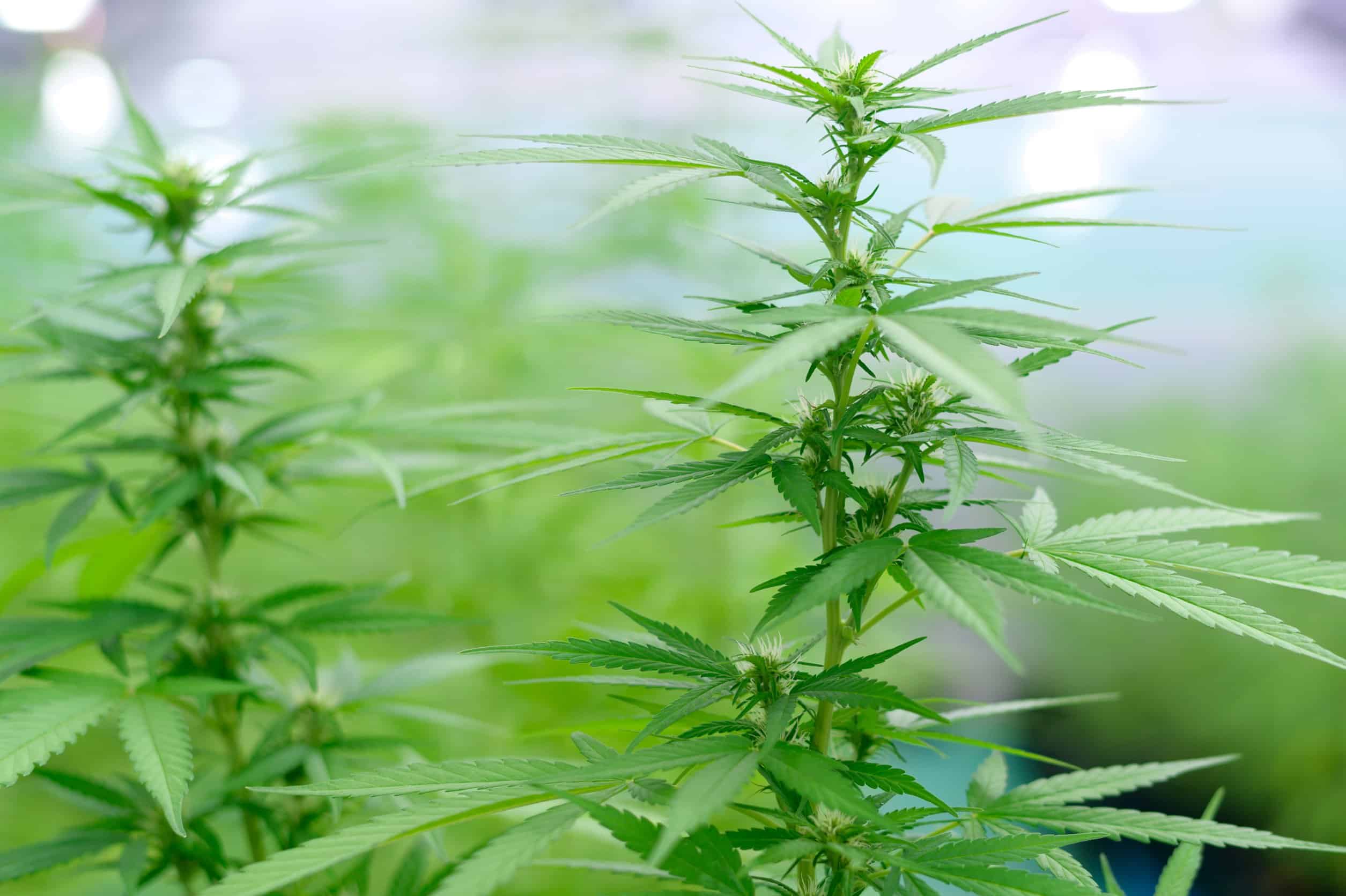No products in the cart.
Marijuana Education
How to Grow Dense Weed Buds
Welcome to our guide detailing everything you need to know about how to grow dense weed buds. Let us help you reap the rewards your labor deserves with dank, thick marijuana nugs. Small buds are usually a disappointment, so it’s vital to avoid similar issues in the future.
Are you pulling your hair out wondering how you can make your buds thicker? We know this feeling and commiserate, but more importantly, we can help.
Read on to learn how to improve your yields and the density of your colas. We outline the environmental and natural forces that affect your output. Discover how to fatten your nugs like the experts and harvest a more significant crop.
Let’s dig in.
The most common reasons for airy marijuana buds
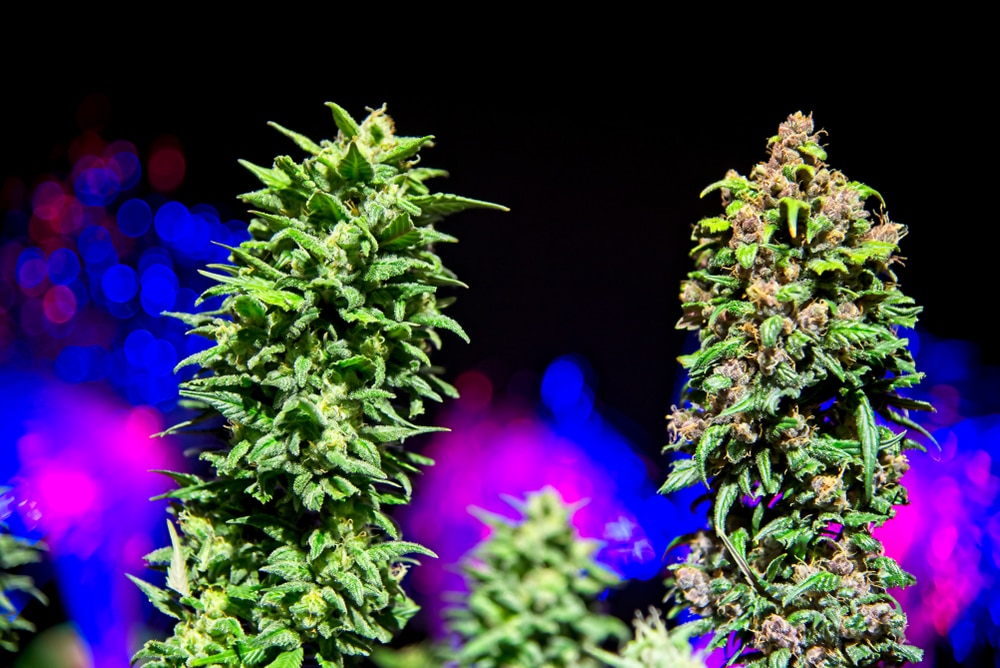
Why are your buds loose and airy? We’ve got the answers. The reasons for light buds are always the same. Either environmental conditions are sub-standard, or your weed seeds have a genetic tendency for loose flowers.
Environmental conditions include soil pH, air and water temperatures, ventilation and wind levels, nutrient availability, and sunlight. Cannabis plants grow explosively with extended periods of direct sun and warm, dry conditions. They also need access to high levels of nutrients.
Your cannabis seeds need the right genetics for the climate. Whether you cultivate indoors or out also impacts your choice of lineage.
Indica and sativa strains respond differently and have varying requirements. Some cultivars have naturally evolved to produce loose, airy buds.
Light
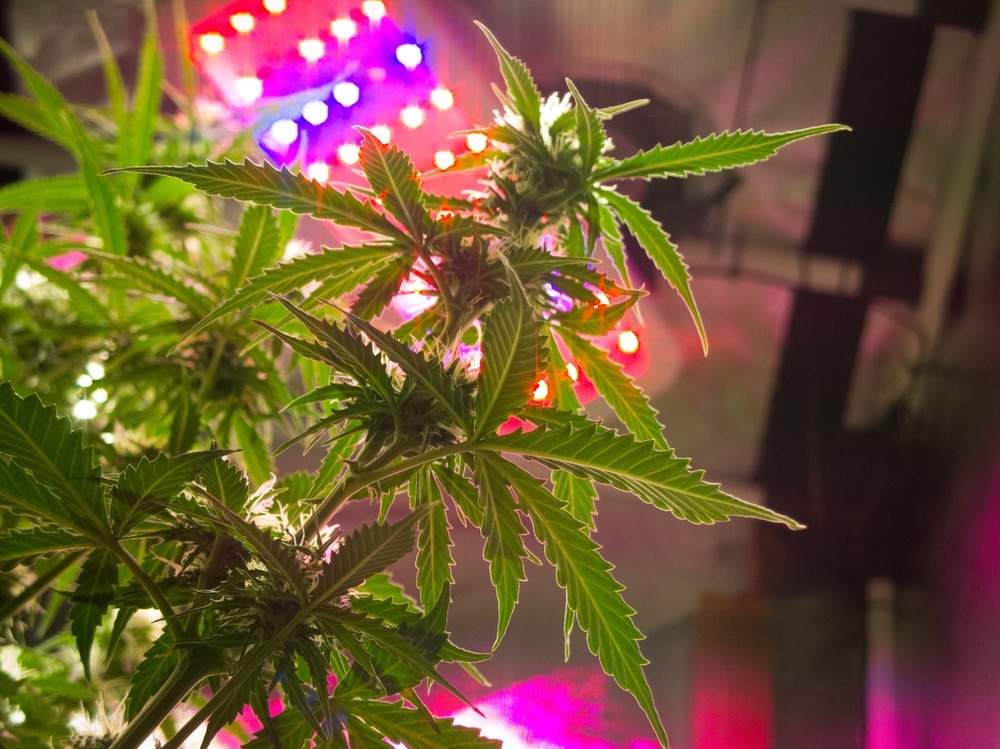
The most common reason for loose flowers is a lack of light, specifically during the flowering phase. If you’re growing indoors, the solution is better or additional lighting. Outdoors is all about the location.
Experienced growers know all about popcorn buds. These light flowers form on the lower branches of cannabis plants with poor access to light. The fan leaves obscure the brightness, limiting photosynthesis and reducing biomass.
Outdoors, it’s optimal to have light winds and long hours of direct sunlight. Exposed areas seldom have both, so choose a suitable spot carefully. Some growers use portable pots to improve mobility, following the sunshine as the seasons or the weather changes.
Genetics
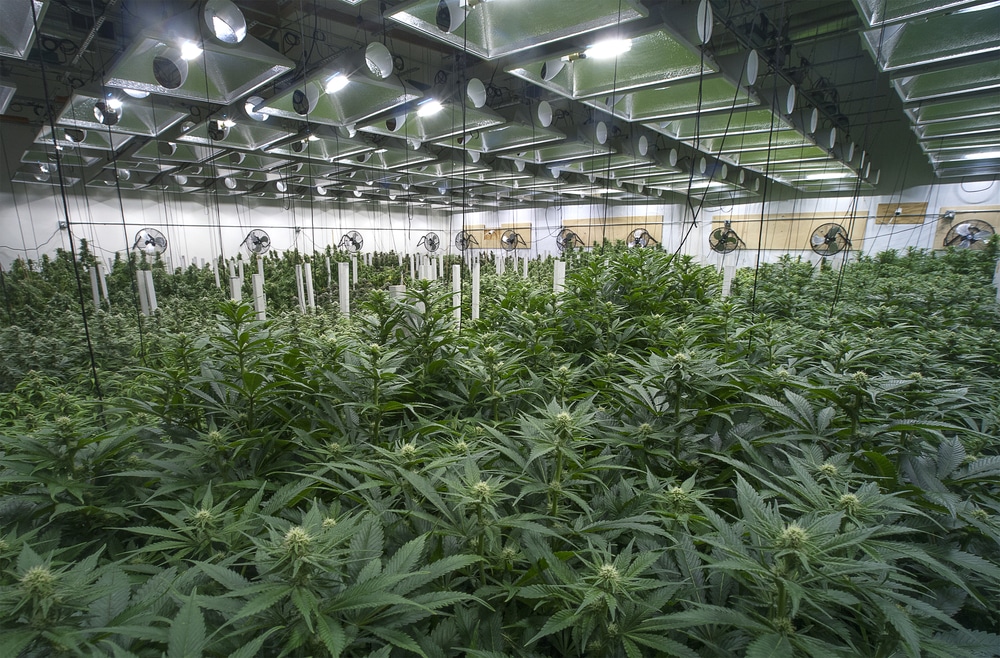
Some strains of cannabis plants are naturally predisposed to grow popcorn buds. Sativa strains are generally less compact than indica varieties and usually hail from tropical, warm, and humid climates. The flowers need aeration to prevent bud rot, mold, and mildew problems.
Experts believe indica cannabis evolved from mountainous, arid conditions in the Hindu Kush mountains. The dry conditions allow for compact buds, which translate into heavier yields.
Choose a strain that produces tightly packed, solid nugs with resin-rich yields. Select seeds that grow plants with heavy flower production and compact buds.
Temperature
Suitable temperature levels are crucial during the flowering period. If the mercury soars above 85⁰F (30⁰C), you might need to fix airy buds. Cannabis plants can develop light flowers which look like foxtails and provide similar effects.
These plants also have the potential for hermaphroditism. Incompatible temps can prompt the crop to take matters into its own hands and self-pollinate. Hermies halt flower production and begin vigorous seed creation to promote genetic survival.
Low temperatures reduce a plant’s rate of photosynthesis in the same way heat does. Avoid temperatures below 60⁰F (15⁰C), as they stunt growth.
Nutrients
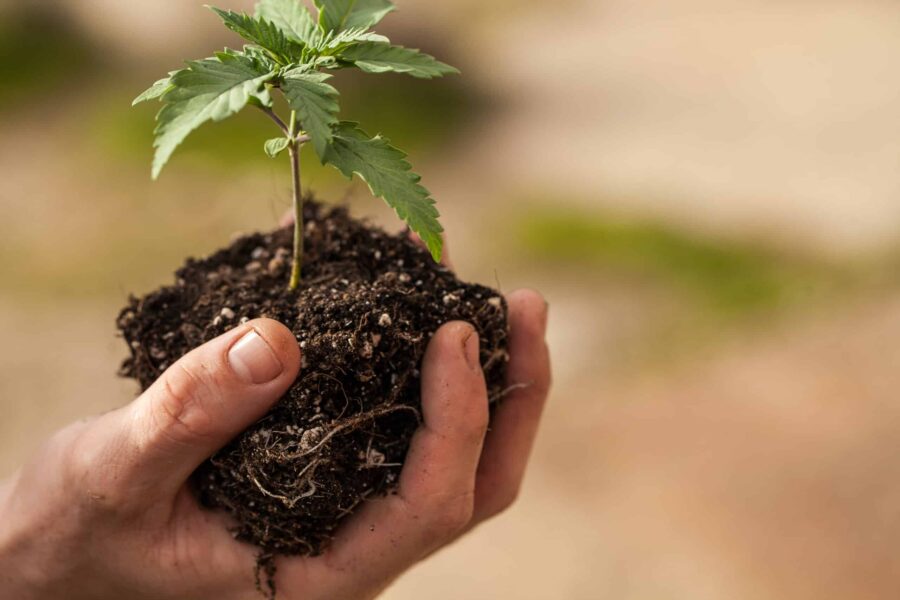
You are what you eat, and if you want to know how to grow dense buds, nutrition is crucial. To produce fat cannabis nugs, you must provide your crops with enough minerals, vitamins, and organic matter.
Early on, plants need more nitrogen for development. Later in the season, they require phosphorus and potassium in more significant volumes.
It’s also vital to ensure your substrate has a pH between 6 and 7, which is slightly acidic. Cannabis plants love it and can only take up most nutrients in this narrow pH window. If the soil is too acidic (below 6) or alkaline (above 7), the crop can’t absorb nutes.
Even if the nutrients are available, the plant can’t absorb them in a nutrient lockout. If you grow cannabis in a soilless substrate or with hydroponics, it may need even lower pH readings for explosive growth.
5 great ways to increase bud density
Environmental factors are the primary reason for larfy buds. Inappropriate light, weather, or substrate poses a potentially damaging threat to your plants, buds, and hopes. To maximize density, employ a strain that suits your needs but is also heavy-yielding.
Why are dense buds better? The crucial factors in cannabis cultivation are quality and quantity. Quality relates to yield potency. Quantity refers to the harvest weight. Dense buds mean heavier nugs of the same volume, offering more substantial outputs.
1. Provide adequate, quality lighting
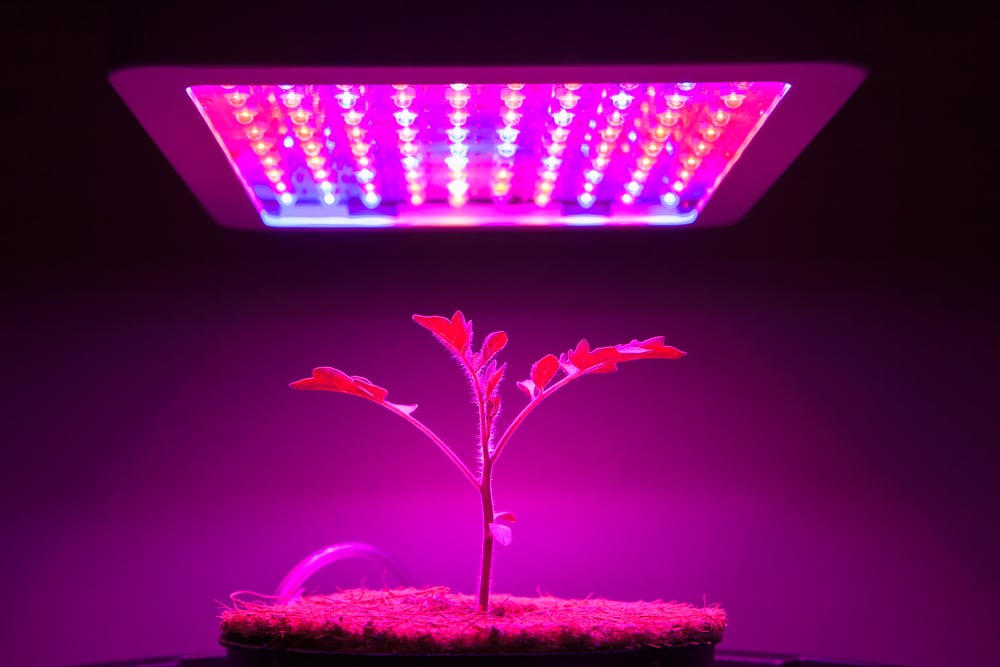
If your plants aren’t getting sufficient sunlight, they can’t produce chlorophyll. It leads to pale or yellow leaves and severely compromises growth. No consideration is as important as lighting, especially during the flowering phase.
It explains why many indoor growers spend significant sums on high-quality, powerful lights. Without them, the quality and density of your nugs fall off a cliff. You can’t fix airy buds later, so get this right the first time, and don’t cut corners.
Sunshine powers the process of photosynthesis together with carbon dioxide and water. It produces energy for the plant in a sugar called glucose. It also creates the oxygen we breathe. Extra light forms more chlorophyll, leading to robust plants and healthier crops.
Outdoors, plants are happiest with 10–12 hours of direct sun per day, but those conditions are exceptional. They need a minimum of 5 hours of direct sunlight each day. Indoor growers can extend the day phase to 18 or 20 hours, with 6 or 4 hours of darkness, respectively.
In warm climates, you may need to reduce the amount of sunlight to prevent heat stress and larfy buds.
Some autoflower varieties can forgo the dark cycle altogether, but most can’t. With 24-hour light, the plants can’t access the energy stored and released at night. It can lead to stress, which manifests in tissue issues and sensitivity to disease and pests.
Scientists believe plants need darkness for rest and for moving nutrients to the extremities. Sufficient light also eases their progression from the vegetative to the flowering stage.
2. Grow a high-yielding strain
Genetic factors are a large part of why certain strains are naturally heavy-yielding and allow you to get big, dense nugs.
There’s a significant advantage for indica varieties that grow smaller plants with compact buds. They evolved in more temperate regions with lower humidity levels.
Sativa strains originated from tropical areas with much higher relative humidity (RH). Water retention in tightly packed buds is a potential time bomb, with mold or bud rot almost certain.
Fortunately, the explosion of strains means pure landrace versions are now rare, like unicorns. Breeders create most cultivars to maximize potency and yield, which usually means a combination of genetics. These strains are hybrids with both sativa and indica attributes.
Below are the best strains for big buds.
Amnesia Haze
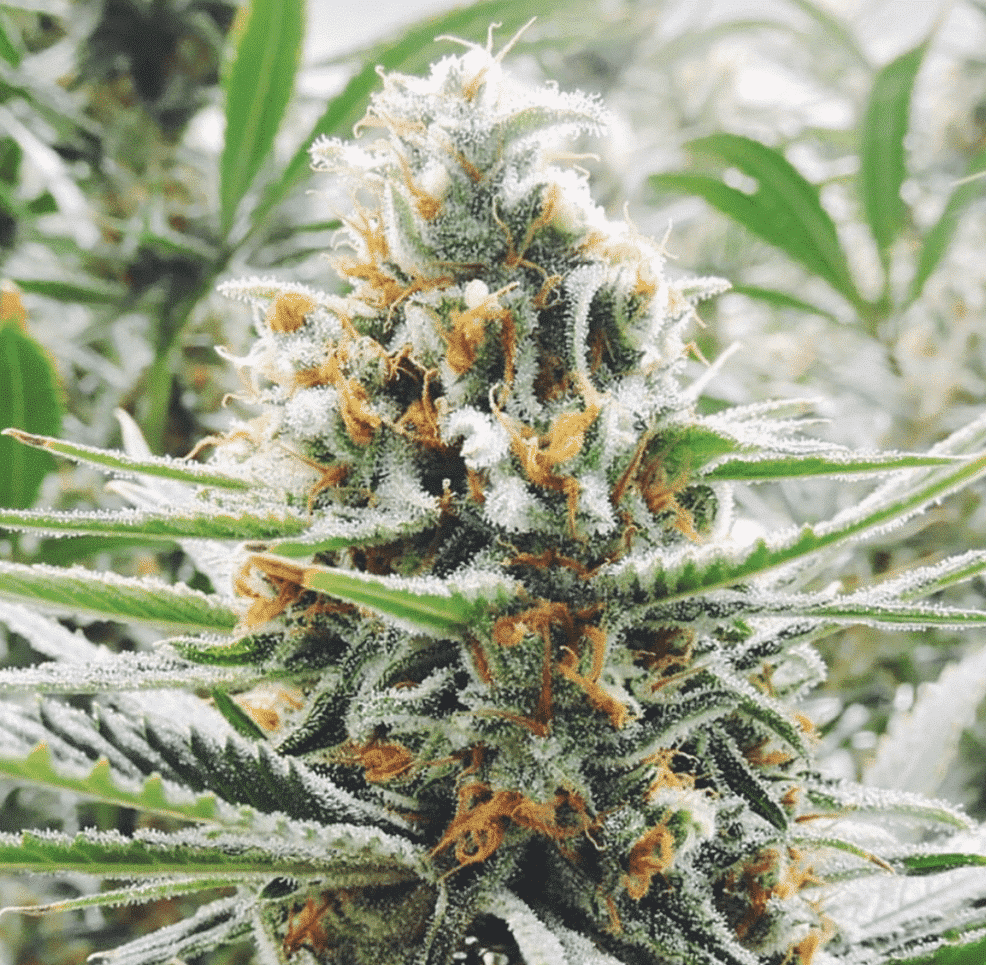
These Cannabis Cup-winning seeds produce sativa-dominant plants with substantial harvests. Why are dense buds better? Compact nugs mean heavier yields of Amnesia Haze flowers, providing an uplifting and energetic kick.
This strain’s moniker is something of a red herring. While many cannabis cultivars might impact memory, Amnesia Haze doesn’t. It’s also unlikely to prompt premature sleep.
In optimum indoor conditions, you could gather 17–21 oz./m² of buds after about nine weeks of flowering. In the open, expect 21–28 oz./plant of cerebral weed, with moderate to high THC levels measured at 16–20%.
Critical Plus
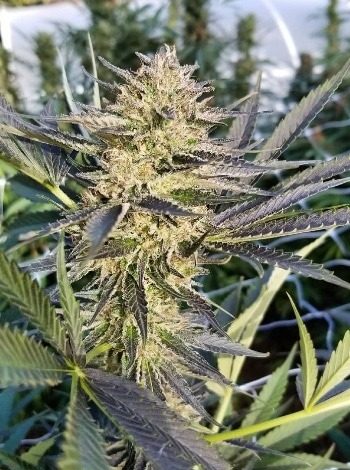
How can you make your buds thicker? Try the indica-dominant Critical Plus for enormous yields of dense nugs. It crosses Big Bud with legendary Skunk #1. Indoor growers can reap 22 oz./m², while outdoors, you could collect a mountainous 45 oz./plant.
THC is moderate at 12–16%, but this strain offers soothing mental relaxation allied with a sedating body stone. Flavors are earthy and sweet. You get big, dense nugs with Critical Plus.
It’s quick flowering and super resilient, producing short plants. They negotiate the flowering phase in 6–8 weeks and grow extravagant, tightly packed nugs.
Super Lemon Haze
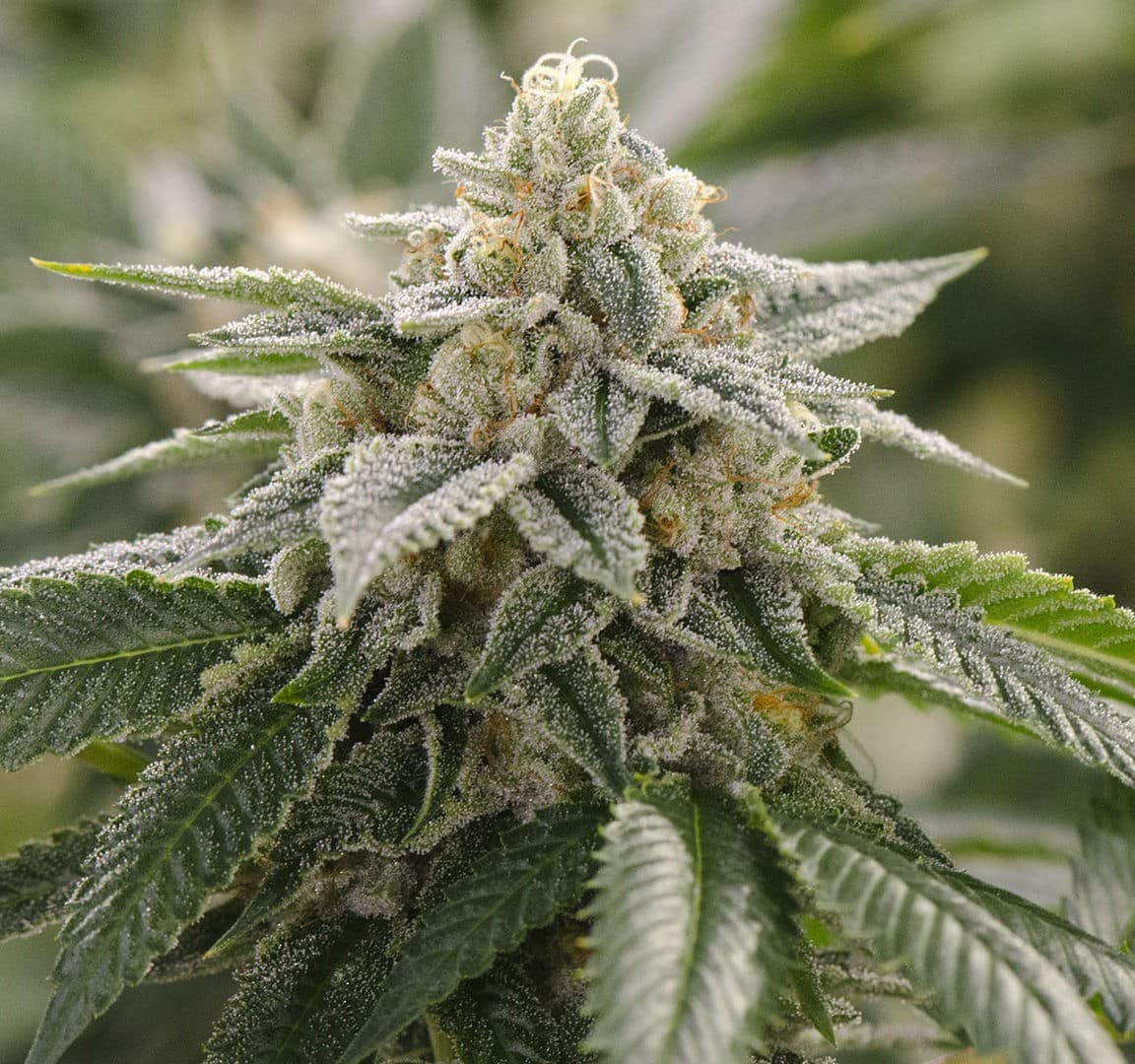
A two-time Cannabis Cup-winner, Super Lemon Haze produces plants with tight buds and heavy yields. It’s a mix of 1997 winner Super Silver Haze and Lemon Skunk. THC values are 15–20% for this sativa-dominant cultivar.
Its effects are energetic and social, in line with most sativa cultivars. Super Lemon Haze elevates your mood and is an excellent daytime option because it combats fatigue. These hybrid seeds grow compact buds with balanced effects and an intense lemon aroma.
Flowering lasts up to ten weeks, after which you could realize an indoor harvest of 21–24 oz./m² of fruity bud. Outdoor farmers report outputs of 24–31 oz./plant with minimal larfy buds.
Black Domina
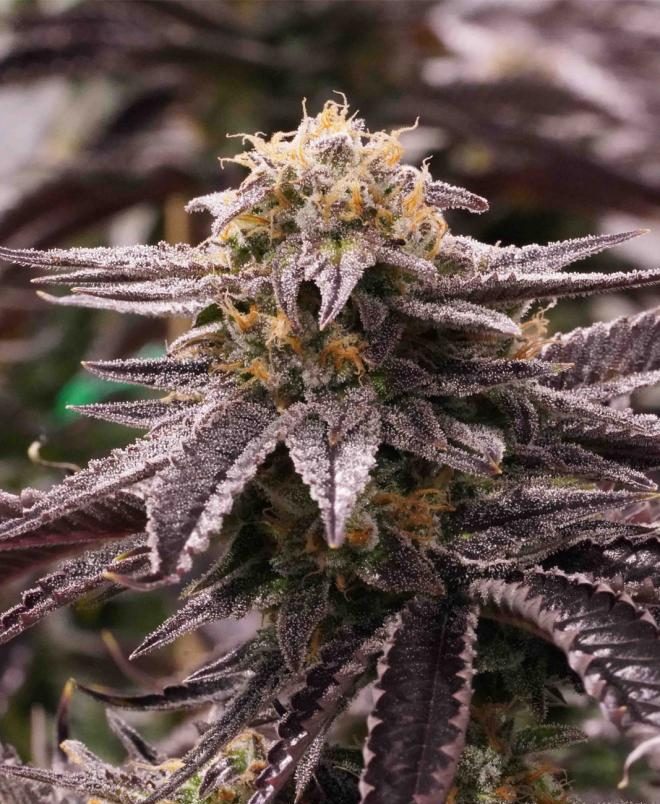
An epic combination of Afghani, Ortega, Hash Plant, and Northern Lights, Black Domina is almost pure with 95% indica genes. The spicy, fruity kush taste is delicious and a prelude to relaxation and sedation.
Potent, physically relaxing, and almost narcotic, Black Domina has 15–20% THC levels that produce a full-body stone. It also displays a gorgeous contrast, with dark green leaves, deep purple flowers, and pumpkin orange pistils.
The squat plants produce heavy resin deposits and take around nine weeks to conclude flowering. Indoor yields are heavy, netting 19–21 oz./m². Expect outdoor outputs in the region of 24 oz./plant. Limit popcorn buds with excellent growing conditions.
Blueberry
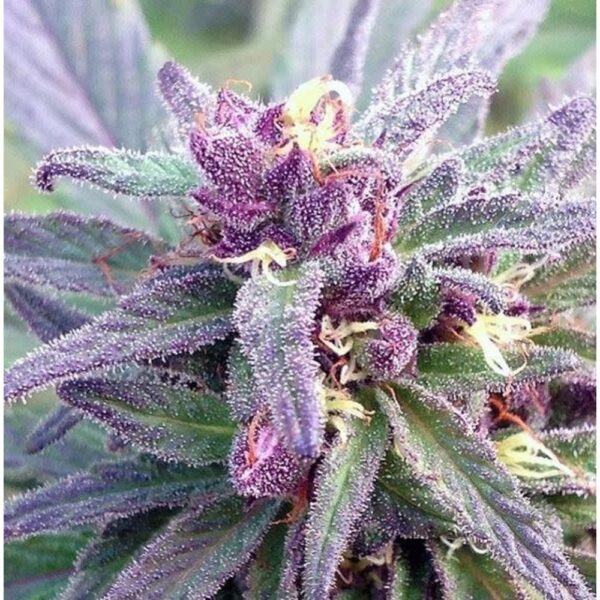
A widely cherished strain, famed breeder DJ Short created Blueberry in the 1970s. This icon has compact, fruity, indica-dominant (80:20) flowers. It’s a blend of Afghan, Thai, and Purple Thai genes. Opting for Blueberry can help you learn how to grow dense buds.
It’s aesthetically stunning with hues of purple and indigo. Growers drop overnight temperatures a few degrees to achieve the colorful effect. While it doesn’t affect THC levels, it’s the apex of bag appeal.
THC values of 15–24% are moderate to high, offering excellent returns on top of its unparalleled flavors. Indoor harvests of 17 oz./m² are possible, while 24 oz./plant is conceivable outdoors.
Chocolate Thai
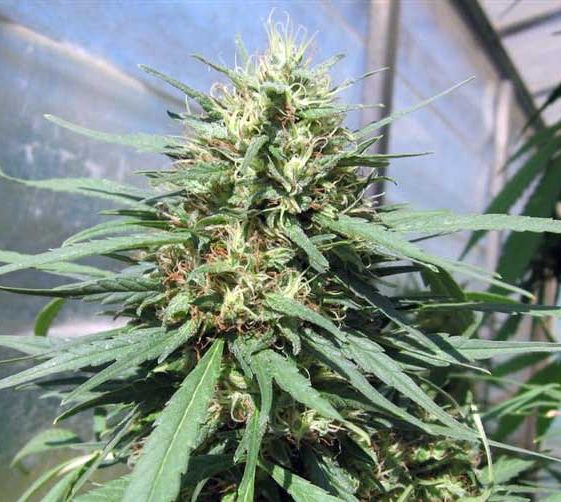
Chocolate Thai is a sativa-dominant cultivar that produces spindly sticks peppered with small round nugs and euphoric effects.
This is a landrace strain, meaning it grows in Thailand naturally, without cultivation. Some dedicated US breeders have kept the original version unaltered for 60 years. Its origin, appearance, and cocoa flavor spawned the name.
In helpful conditions, indoor growers can harvest 19–21 oz./m². Outdoors, you can reap even more significant yields with up to 31 oz./plant. Growing the Chocolate Thai strain could improve your output and fix airy buds.
3. Keep the temperature under 85°F (30°C)
Figuring out how to grow dense buds depends on optimal air temperatures. Under adverse temperatures, cannabis plants can’t photosynthesize.
If the mercury rises above 85⁰F (30⁰C) or drops below 60⁰F (16⁰C), growth slows markedly. In the flowering phase, it can compromise bud potency, flavor, and density.
Unseasonable heat slows nutrient uptake, causing plants to droop and wilt. It can even halt trichome production. In extreme cases, the leaves turn yellow or brown, get crispy, or curl.
It also happens indoors with lights providing heat. Usually, the plants stretch, so make sure the lights aren’t too close to the main colas. Employ fans or air-con to improve ventilation.
Low temperatures are similarly ineffective for cannabis growth. Some ruderalis autoflower varieties buck the trend due to their Eastern European and Siberian roots. Most strains die rapidly in cold circumstances.
4. Adjust your nutes as needed
Most growers understand the need to supplement their medium with minerals and vitamins to boost plant growth and health. Fewer realize the NPK ratios vary as the life cycle progresses.
Each strain can also have particular needs, further complicating matters. We assess the changing NPK needs of cannabis as it negotiates the life cycle below.
Seedling stage requirements
Any decent soil options contain enough nutrients, especially nitrogen, to support the seedling through this phase. If you want to get big, dense nugs, be patient. Let nature take its course.
We don’t recommend you begin fertilization until the seedlings deplete the energy within the seed and substrate. It generally takes 2–4 weeks before you need to assist. Err on the side of caution, as seedlings are delicate, and potent chemicals could burn them or worse.
Best nutrients for the vegetative stage
Growers supplement their plants’ intake with the NPK combination fertilizer. Nitrogen (N), phosphorus (P), and potassium (K) are the main ingredients your plants need to thrive.
Nitrogen is the most vital element for growing plants. Atomic number seven, this chemical element is crucial for development, building stems and leaves. It won’t fix airy buds but provides the best base for your crop.
A colorless, odorless gas in its natural state, nitrogen helps create amino acids. These molecules combine to form proteins and are the building blocks of life. Low nitrogen levels show in yellowing leaves and stunted growth.
Nitrogen also promotes the creation of chlorophyll, the green pigment which allows photosynthesis. Chlorophyll levels in the vegetative stage determine the speed of expansion.
Plants require phosphorus and potassium in large volumes. A 2:1:1 NPK ratio is a great starting point for the vegetative stage. Every grower has their specific preference or combination.
Cannabis crops also absorb several micronutrients in much smaller quantities. They include:
- Calcium (Ca)
- Magnesium (Mg)
- Manganese (Mn)
- Boron (B)
- Molybdenum (Mo)
- Zinc (Zn)
- Nickel (Ni)
- Copper (Cu)
- Chlorine (Cl)
Silicon (Si), sodium (Na), and cobalt (Co) aren’t essential, but experts consider them beneficial minerals. A lack of trace elements means plants can’t live up to their full potential.
Wait a week after transplanting before introducing the best nutrients for the vegetative stage. Transplanting is stressful and can leave the plant susceptible to disease or pests.
Getting the most from the flowering phase
How can you make your buds thicker? The flowering phase for cannabis plants marks high consumption of available nutrients to produce flowers. Insufficient minerals are likely to result in light or airy buds.
Cannabis needs phosphorus for root growth and the transfer and storage of energy. Crucially, it’s central to flower development, and plants need large amounts of the element during bloom.
Growers note fewer phosphorus deficiencies when they feed plants the element through the vegetative stage. Use an NPK fertilizer to eliminate concerns.
Potassium impacts the health and strength of the plant by regulating its metabolism. It improves resistance to drought and transports energy reserves.
Like phosphorus, this element is key to bud formation, and crops need more during bloom. Potassium shortages result in weak, straggly plants and disappointing yields.
Indoor growers change the lighting schedule from 18:6 to 12 hours on and 12 off to induce flowering. The plants halt structural development and use all their energy for flower production.
Remember to change the NPK ratio for flowering. Early in the flowering phase, the plants still need a little nitrogen, so a 1:3:2 combination should suffice. In the final few weeks before harvest, change to an NPK ratio of 0:3:3 to get big, dense nugs.
5. Lower relative humidity to 55% in the final 2-3 weeks before harvest
The final few weeks before harvest can be the most important of the entire operation. The branches may buckle under the strain of the bulbous buds. The tantalizing flavors should tempt your patience while the glittering trichomes shine like diamonds.
Initially, crops need high humidity, with an RH of 65% for seedlings or clones. The leaves absorb water to fuel growth while roots form. During veg, you can reduce RH by 5% per week to a low of 40%.
During flowering, excess moisture is a bud rot infection waiting to happen. It’s essential to lower humidity when growing high-density weed.
Most strains thrive with 40–50% RH, but super-compact hybrids in warm climates might need 30% to get big, dense nugs.
Flush your plants with fresh water for the last two weeks of flowering to remove the chemical aftertaste.
Lower temperatures during flowering to 68–78°F (20–26°C). Many growers suggest dropping the overnight temperature by 5–10 degrees to elicit some blue and purple coloration. It has no impact on potency but offers oodles of bag appeal.
The lowdown on how to grow dense weed buds
You should now know how to grow dense buds. Choose your favorite strain and order high-yielding cannabis seeds from our store. We have over 1,200 genetically distinct variations available from around the globe.
We provide free shipping for high-quality seeds with impeccable genetics on orders over $99. We ship to Canada, the USA, and Australia and include a few freebies in your package to sweeten the deal, too.


